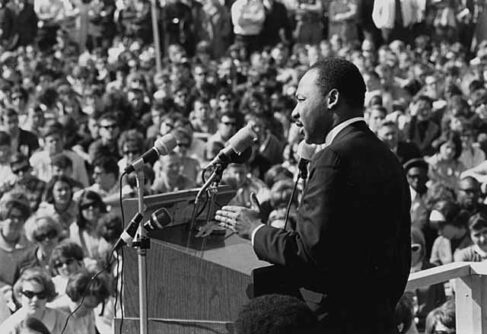Among the report’s recommendations about how to change social norms is the expansion of several programs in primary and secondary schools that offer “giving education.” The report singles out Giving Nation, Go-Givers, and the Youth and Philanthropy Initiative as programs that effectively teach philanthropy.
But can philanthropy be taught in schools?
Our son’s elementary school had a penny drive this spring to aid Japanese earthquake victims. Our son enthusiastically rounded up pennies from every nook in the house and proudly bore them off to school—but I’m sure that his enthusiasm was more motivated by the delight of adding to a big jar of pennies in his classroom than by genuine compassion for a remote people whose needs are beyond his ken.
The Youth and Philanthropy Initiative singled out in the Philanthropy Review report is a program, inaugurated in Canada, in which secondary school children research local organizations and recommend a charity to receive a grant. In Canada the charities recommended by the students receive five-thousand dollar grants from the Toskan Casale Foundation; in the United Kingdom three-thousand pound grants are funded by Credit Suisse and the Wood Family Trust. Students do not give their own money or hold a fund-raiser for their chosen charity.
The eighteenth century philosopher Rousseau, whose treatise Emile is one of the greatest meditations on the education of children, rightly criticized such approaches to teaching charity. Rousseau wrote:
Alms giving is an action for a man who knows the value of what he gives and the need that his fellow man has of it. In the child, who knows nothing about that, giving cannot be a merit. He gives without charity, without beneficence…Note that the child is always made to give only things of whose value he is ignorant—some pieces of metal which he has in his pocket and which he uses only for giving. A child would rather give a hundred louis than a cake. But commit the prodigal distributor to give things which are dear to him—toys, candies, his snack—and we shall soon know if you have made him truly liberal.
Elementary school children and even many secondary children cannot truly understand the needs of others whose circumstances may be remote from theirs; they do not exercise a truly charitable disposition when they pledge the money of another charitable organization. The approach to teaching charity in schools recommended in the Philanthropy Review report fail both of Rousseau’s criteria—they encourage “giving” by those who do not feel the value of what they give and by those whose experience is still too narrow to feel the need their fellow men have of charity.
Perhaps such school programs as recommended in the Philanthropy Review’s report plant a seed of thought about others’ needs and the role charitable organizations can play in the community. At best such thoughts are preliminary to becoming a philanthropic person; philanthropy is a disposition that we can only achieve with maturity—and is more inspired by the examples of philanthropic individuals rather than by lessons from a school lesson plan.
1 thought on “Children and giving”
Comments are closed.






“Elementary school children and even many secondary children cannot truly understand the needs of others…” This ignorant statement actually borders on shameful bigotry and ageism.
I’m a professional fundraiser. I’m the winner of the AFP-Skystone Prize for Research in Fundraising and Philanthropy for my bestselling book “Donor-Centered Planned Gift Marketing,” which is listed on the CFRE International Resource Reading List. I’m not sharing this information to impress anyone, but merely to let folks know where I am in my career. You should also know that I would not be where I am if I did not learn about philanthropy from my parents who inspired me to have, and helped me with, my backyard fairs for charity. My religious school which inspired me to raise money for memorial trees in Israel. And, my public school which encouraged me to collect money for UNICEF.
While the education programs referenced in the article might be less than ideal, that is the fault of the educational system and not the fault of a child’s inability to be philanthropic. A well conceived curriculum can most certainly resonnate with children. I’m evidence of that. I recently did a blog post of my own about a 7-year-old who also “understands.” She volunteers and raises money for the SPCA to help animals. (http://wp.me/p1h0KY-6Q)
Children have the capacity to understand more than the author gives them credit for. If a curiculum is designed age-appropriately, children will grasp the concepts. For example, my backyard fairs raised money for a charity that helped inner-city children go to summer camp. I lived in the suburbs while my cousin lived in the city. I knew how miserable the city was in the summer. I wanted to help other kids experience “country-life” like I was able to. Raising money for UNICEF also resonated with my classmates and me because we were helping kids like us but without the advantages we had. For the 7-year-old I mention in my blog, she gets it because she first volunteered at the SPCA and later adopted a dog. She understood she was saving an animal’s life and she realized the joy she felt. Her subsequent fundraising efforts were designed to save animals and bring joy to other people.
So, if you’re finding kids aren’t getting it, blame the adults who developed the curiculum and who teach it. Don’t blame the children.